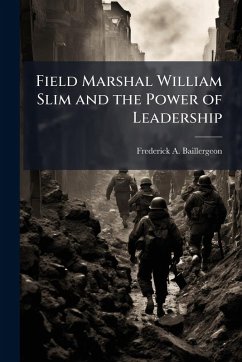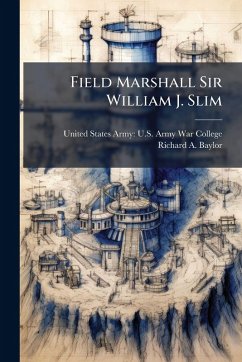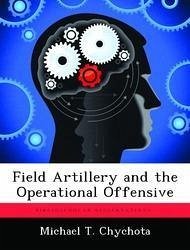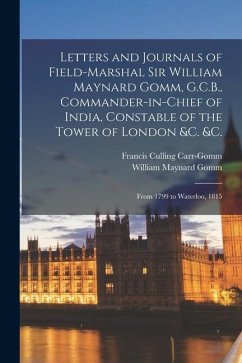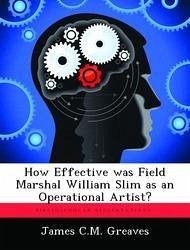
How Effective was Field Marshal William Slim as an Operational Artist?
Versandkostenfrei!
Versandfertig in über 4 Wochen
15,99 €
inkl. MwSt.

PAYBACK Punkte
8 °P sammeln!
Field Marshal William 'Bill' Slim ended World War II in command of Fourteenth Army. His understanding of what motivated men in the most trying of times is well publicized. Indeed, he is most well-known for his thoughts on morale and leadership. This monograph seeks another aspect of Slim, his ability to command at the highest of formations. Focusing on his time in Burma, this paper covers from 1942-1945 and his time as a Corps and Army commander. Slim arrived in Burma in 1942 and assumed command of a corps at the worst possible moment. His two weak divisions were hammered by the Japanese Imper...
Field Marshal William 'Bill' Slim ended World War II in command of Fourteenth Army. His understanding of what motivated men in the most trying of times is well publicized. Indeed, he is most well-known for his thoughts on morale and leadership. This monograph seeks another aspect of Slim, his ability to command at the highest of formations. Focusing on his time in Burma, this paper covers from 1942-1945 and his time as a Corps and Army commander. Slim arrived in Burma in 1942 and assumed command of a corps at the worst possible moment. His two weak divisions were hammered by the Japanese Imperial Army and demoralized by poor leadership, a lack of equipment, and a fear of the jungle. Slim returned the battered remnants of I Burma Corps to India. Assuming command of XV Corps in India, Slim trained and prepared a force capable of defeating the Japanese. Using the tactic of an 'Administrative Box';, a defended locality resupplied by air, it was designed to defeat the Japanese tactics of envelopment. In 1944 Slim, as commander Fourteenth Army, deployed XV Corps and successfully defeated the Japanese for the first time in Burma. It was the tipping point. Following this success, others followed. This paper sets out the historical aspects of the three main campaigns managed by Slim. First it examines Slim's input and performance in the First and Second Arakan Campaigns. Second, his decisions at the defense of Kohima and Imphal and the subsequent break out of the Indian Army from those locations. Finally, it assesses the pinnacle of his generalship during Operations Capital and Extended Capital. Slim's performance warrants careful consideration. He commanded a diverse multinational army over extremely challenging terrain against a fanatically determined enemy. His decisions offer future operational artists guidance and prescient advice. His efforts are often overlooked because of the focus on the European theater. This monograph offers that Slim should come out from the sh This work has been selected by scholars as being culturally important, and is part of the knowledge base of civilization as we know it. This work was reproduced from the original artifact, and remains as true to the original work as possible. Therefore, you will see the original copyright references, library stamps (as most of these works have been housed in our most important libraries around the world), and other notations in the work. This work is in the public domain in the United States of America, and possibly other nations. Within the United States, you may freely copy and distribute this work, as no entity (individual or corporate) has a copyright on the body of the work. As a reproduction of a historical artifact, this work may contain missing or blurred pages, poor pictures, errant marks, etc. Scholars believe, and we concur, that this work is important enough to be preserved, reproduced, and made generally available to the public. We appreciate your support of the preservation process, and thank you for being an important part of keeping this knowledge alive and relevant.



